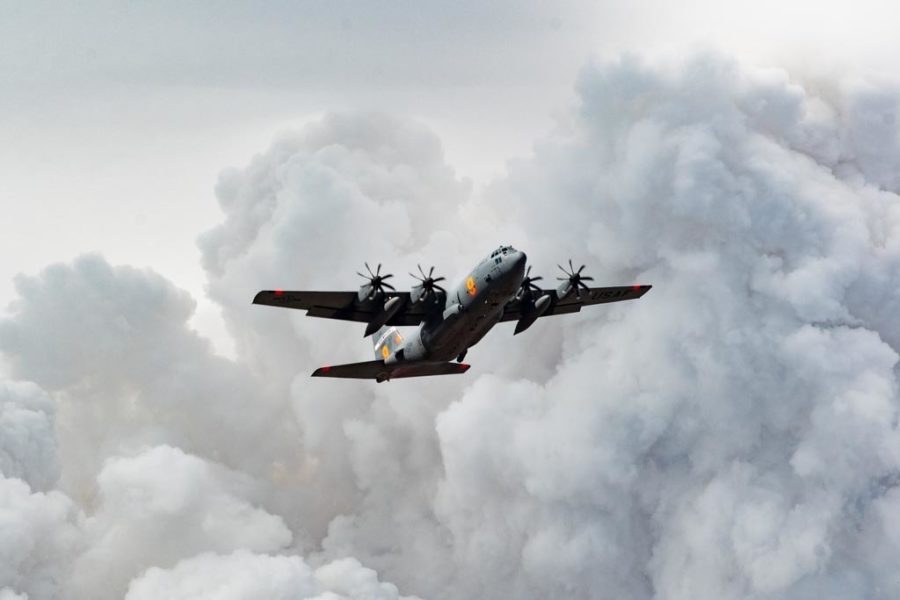Firefighting technology hasn’t changed much from the days when Chief of the National Guard Bureau Gen. Daniel R. Hokanson dropped buckets of water from a UH-60 Black Hawk, and his brother, a smokejumper, parachuted in to fight wildfires on foot.
What has changed is the number of fires—and their intensity.
“We used to talk about ‘fire season,’” Hokanson told a gaggle of journalists at the Pentagon on July 29 as fires raged in Oregon and California. “It’s really a ‘fire year’ now. Fires really almost go year round.”
About 500 Guard and Reserve members and 19 aircraft are helping state authorities respond to the Bootleg Fire in Oregon and the Dixie Fire in California. Combined, the fires have already torched over 600,000 acres. The Guard’s C-130 Modular Airborne Fire Fighting Systems (MAFFS) are able to drop 3,000 pounds of retardant on a wildfire in less than five seconds, fly back, refill, and be in the air again in under 20 minutes.
“When you see a plane come in and leave that big red streak of fire retardant, we use our C-130s to do that,” said Hokanson.
To date, four MAFFS-equipped C-130s from three states have made 273 drops and flown 280 sorties.
In addition to the C-130’s fire retardant power, helicopters are called to deliver water buckets, like in the late ’90s when Hokanson was piloting fire crews.
“We use a lot of helicopters as well, with buckets, and they usually scoop up water nearby and drop it on the fire,” he said. “I used to do that when I was young and cool. So, it’s a pretty intense environment to do that.”
In anticipation of a larger wildfire season and more demand, fire crews from Nevada, Oregon, Washington, Idaho, Montana, and Arizona were trained earlier this year to provide backup, Hokanson said.
The force is always watching environmental conditions: snowfall, rain, wind, and humidity content in forests.
“When it reaches a certain level, of course, it’s very prone to fire,” he said.
Civilian fire crews used to be sufficient for fires in the fall, winter, and early spring, but now the Guard is needed more than ever before.
Hokanson said the Guard is using just 10 percent of its firefighting capacity, with a reach of up to 200 aircraft. The advanced training and the available aircraft are sufficient for the Guard to help states now, but resources will need to remain in place if the wildfire trend continues.
“We’re in a pretty good spot right now,” Hokanson said of the Guard members in nearby states who received advance training. “Most of those folks are already trained and ready to go.”

